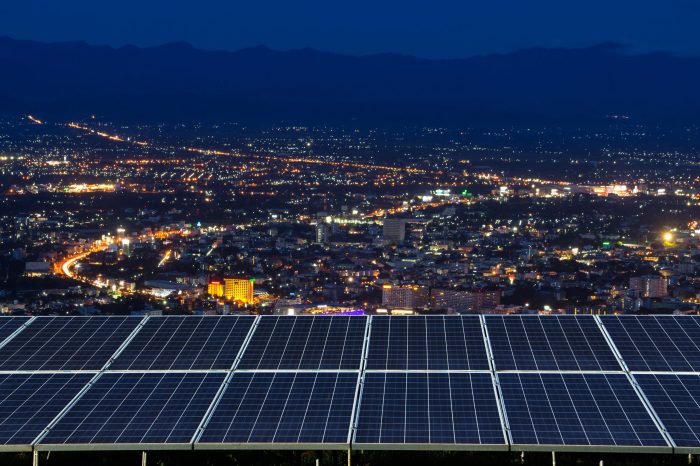The Rise of Solar-Powered Cycling Infrastructure in South Korea
South Korea has witnessed a surge in cycling popularity in recent years, fueled by growing awareness of environmental concerns and the desire for healthier lifestyles. This shift towards cycling has led to the development of extensive cycling infrastructure, particularly in urban areas. However, cyclists in South Korea face various challenges, including traffic congestion, limited dedicated cycling paths, and a lack of convenient charging facilities for electric bikes. Solar panels are emerging as a crucial solution to address these challenges, offering sustainable and innovative ways to enhance cycling infrastructure.
Solar Panels: A Solution to Cycling Challenges
Solar panels play a vital role in enhancing cycling infrastructure in South Korea by addressing key challenges faced by cyclists. They provide a clean and renewable source of energy for various applications, including:
- Lighting: Solar-powered streetlights illuminate cycling paths, improving visibility and safety for cyclists, especially during nighttime hours.
- Charging Stations: Solar panels power charging stations for electric bikes, offering cyclists convenient and sustainable ways to recharge their batteries. This encourages the adoption of electric bikes, reducing reliance on fossil fuels.
- Information Displays: Solar-powered displays provide cyclists with real-time information about traffic conditions, cycling routes, and nearby amenities, enhancing their overall cycling experience.
Innovative Solar-Powered Cycling Infrastructure Projects
South Korea has implemented several innovative solar-powered cycling infrastructure projects, showcasing the country’s commitment to sustainable cycling:
- The Sejong Smart City: This city features a comprehensive network of solar-powered charging stations for electric bikes, strategically located throughout the city. The stations are equipped with intelligent systems that monitor charging status and provide real-time information to cyclists.
- The Seoul Bike Sharing System: This system has incorporated solar panels into its bike stations, powering lighting and information displays. The solar panels also provide backup power in case of power outages, ensuring the smooth operation of the system.
- The Busan Cycling Path: This path features solar-powered streetlights that illuminate the entire route, enhancing safety and visibility for cyclists. The solar panels are integrated into the design of the streetlights, minimizing visual impact and creating a harmonious aesthetic.
Benefits of Solar Panels for Cyclists
Solar panels have become a game-changer for cyclists in South Korea, offering a sustainable and efficient way to power their rides. From charging electric bicycles to powering cycling infrastructure, solar energy is revolutionizing the cycling experience.
Charging Electric Bicycles
Solar panels can directly power electric bicycles, offering a convenient and environmentally friendly way to recharge. Solar-powered charging stations are becoming increasingly common, allowing cyclists to top up their batteries while enjoying the outdoors.
The use of solar panels for charging e-bikes significantly reduces reliance on fossil fuels, contributing to a cleaner and more sustainable transportation system.
Advantages of Solar-Powered Cycling Infrastructure, Solar panels provide relief for cyclists in south korea
Solar panels offer numerous benefits for powering cycling infrastructure, making it more accessible and user-friendly.
Advantages of Solar-Powered Cycling Infrastructure
- Reduced Energy Costs: Solar panels generate free energy, reducing the need for expensive electricity from the grid. This can significantly lower the operating costs of cycling infrastructure, making it more sustainable and affordable.
- Improved Accessibility: Solar-powered charging stations can be installed in remote areas, providing charging facilities for cyclists who may not have access to traditional electricity sources. This expands the reach of cycling infrastructure, making it more accessible to a wider range of users.
- Enhanced Safety: Solar-powered lighting systems can illuminate cycling paths and routes, improving safety for cyclists, especially during nighttime hours. This can help reduce accidents and create a more welcoming environment for cyclists.
Environmental Benefits of Solar Panels for Cycling
The use of solar panels for cycling has significant environmental benefits, contributing to a greener and more sustainable future.
Environmental Benefits of Solar Panels for Cycling
- Reduced Carbon Emissions: Solar panels generate clean energy, reducing reliance on fossil fuels and lowering carbon emissions. This helps mitigate climate change and create a healthier environment for everyone.
- Improved Air Quality: By reducing reliance on fossil fuels, solar-powered cycling infrastructure contributes to improved air quality, reducing smog and other pollutants. This benefits both cyclists and the general population.
- Reduced Noise Pollution: Solar panels operate silently, reducing noise pollution from traditional power sources. This creates a more peaceful and enjoyable cycling experience.
Efficiency and Cost-Effectiveness of Solar-Powered Cycling Solutions
Solar-powered cycling solutions are increasingly cost-effective, offering a viable and sustainable alternative to traditional energy sources.
The efficiency of solar panels has significantly improved in recent years, making them a more reliable and cost-effective option for powering cycling infrastructure.
Efficiency and Cost-Effectiveness of Solar-Powered Cycling Solutions
- Technological Advancements: Advances in solar panel technology have increased their efficiency and reduced their cost, making them a more attractive option for cycling infrastructure.
- Government Incentives: Many governments offer incentives and subsidies for the installation of solar panels, making them more affordable for businesses and individuals.
- Long-Term Savings: Solar panels have a long lifespan, offering long-term cost savings compared to traditional energy sources. This makes them a financially viable option for powering cycling infrastructure.
Case Studies: Solar Panels Provide Relief For Cyclists In South Korea
Solar panels provide relief for cyclists in south korea – To understand the real-world impact of solar-powered cycling infrastructure, let’s delve into some inspiring case studies from South Korea. These projects showcase the practical implementation of solar technology to enhance cycling experiences and promote sustainable transportation.
South Korea is taking cycling to the next level with solar panels that provide relief for cyclists, powering up their gadgets on the go. This eco-friendly innovation reminds us of the cool tech advancements happening in the mobile world, like the Windows 10 for phones preview being expanded to more devices. Just like cyclists are embracing sustainable energy, we’re seeing a shift towards more user-friendly and accessible mobile operating systems, making our lives easier and more connected.
Successful Solar-Powered Cycling Projects in South Korea
These projects demonstrate the tangible benefits of solar panels in action, highlighting their ability to power various cycling infrastructure elements and improve cyclist safety and comfort.
| Project Location | Type of Infrastructure | Impact on Cyclists |
|---|---|---|
| Seoul’s Olympic Park | Solar-powered bike charging stations | Provides convenient and eco-friendly charging options for electric bikes, reducing range anxiety and promoting longer cycling journeys. |
| Busan’s Haeundae Beach | Solar-powered bike path lighting | Enhances visibility and safety for cyclists, particularly during evening hours, encouraging more people to ride at night. |
| Gyeongju’s UNESCO World Heritage Site | Solar-powered bike rental kiosks | Offers sustainable and convenient access to bicycles for tourists and locals, promoting eco-friendly exploration of the city. |
| Jeju Island’s Coastal Bike Trail | Solar-powered rest stops with shade structures and water fountains | Provides comfortable and well-equipped rest areas for cyclists, promoting longer and more enjoyable rides. |
The Future of Solar-Powered Cycling in South Korea
The potential for solar-powered cycling infrastructure in South Korea is vast, promising a cleaner, more sustainable, and efficient mode of transportation. The country’s commitment to renewable energy and its growing cycling culture provide fertile ground for the widespread adoption of solar-powered cycling solutions.
Technology Advancements in Solar-Powered Cycling
Technology advancements are playing a crucial role in enhancing solar-powered cycling solutions, making them more efficient, affordable, and accessible.
- Improved Solar Panel Efficiency: The efficiency of solar panels has significantly increased in recent years, allowing for smaller and lighter panels to generate more power. This makes them more practical for integration into bicycles, reducing weight and improving aesthetics.
- Advanced Battery Technology: Advancements in battery technology have led to higher capacity and longer-lasting batteries, enabling cyclists to store more energy from solar panels and travel further distances.
- Smart Integration and Monitoring: Smart technology allows for real-time monitoring of solar panel performance, battery levels, and other cycling data. This provides cyclists with valuable insights and helps optimize energy usage.
Challenges and Opportunities for Solar-Powered Cycling
Despite the promising potential, the widespread adoption of solar-powered cycling in South Korea faces several challenges and opportunities.
- Infrastructure Development: Expanding the existing cycling infrastructure with solar-powered charging stations and bike lanes is crucial to encourage wider adoption. This requires significant investment and government support.
- Public Awareness and Education: Raising public awareness about the benefits of solar-powered cycling and educating the public about its technology and usage is essential. This can be achieved through campaigns, workshops, and educational initiatives.
- Cost-Effectiveness: The initial cost of solar-powered bicycles and charging infrastructure can be a barrier for some cyclists. Government incentives, subsidies, and affordable financing options can help overcome this hurdle.
“Government support and public awareness are crucial for the successful adoption of solar-powered cycling. By investing in infrastructure, promoting education, and fostering a culture of sustainable transportation, South Korea can pave the way for a brighter future of cycling.”
Visual Representations
Visualizing the rise of solar-powered cycling infrastructure in South Korea provides a deeper understanding of its impact and potential. By showcasing the integration of solar technology into cycling infrastructure, these representations demonstrate the tangible benefits for cyclists and the environment.
Solar-Powered Bike Charging Station
Imagine a sleek, modern structure with solar panels seamlessly integrated into its design. This is the typical solar-powered bike charging station in South Korea. It stands prominently near popular cycling routes, offering a convenient and sustainable way for cyclists to recharge their electric bikes.
The station’s design incorporates several key elements:
* Solar Panel Array: Positioned on the roof or sides of the station, these panels capture sunlight and convert it into electricity, powering the charging stations.
* Charging Stations: Multiple charging points are available, each equipped with a standard electric bike connector. These stations can be designed to accommodate different types of electric bikes, ensuring accessibility for all cyclists.
* Information Display: A digital display provides real-time information about the charging status, available slots, and any relevant cycling route details.
* Rest Area: Some stations include a small rest area with benches and water fountains, allowing cyclists to take a break and enjoy the scenery.
Solar-Powered Cycling Route
A solar-powered cycling route is more than just a path. It’s a network of interconnected infrastructure designed to enhance the cycling experience while promoting sustainability.
- Solar-Powered Streetlights: Illuminating the route at night, these lights provide a safe and secure cycling environment.
- Solar-Powered Charging Stations: Strategically placed along the route, these stations offer convenient charging opportunities for electric bikes.
- Solar-Powered Information Kiosks: Providing real-time information on route conditions, weather updates, and points of interest, these kiosks enhance the cycling experience.
- Solar-Powered Rest Areas: Offering shaded seating, water fountains, and bike repair stations, these rest areas provide a comfortable space for cyclists to take a break.
- Solar-Powered Signage: Clearly marked signs guide cyclists along the route, indicating directions, distances, and points of interest.
Impact of Solar Panels on Carbon Emissions
Solar panels play a crucial role in reducing carbon emissions from cycling by providing a clean and renewable source of energy.
By replacing fossil fuels with solar power, these initiatives contribute to a greener and more sustainable transportation system.
For example, the use of solar panels in charging stations reduces the reliance on electricity generated from fossil fuels, resulting in a significant decrease in carbon emissions. Additionally, the use of solar-powered streetlights and other infrastructure elements further contributes to a cleaner and more environmentally friendly cycling environment.
The integration of solar panels into South Korea’s cycling infrastructure is a testament to the country’s commitment to both environmental sustainability and the well-being of its cyclists. As technology continues to advance, we can expect to see even more innovative and efficient solar-powered cycling solutions in the future. This shift towards a sustainable and cyclist-friendly future is not only beneficial for individuals but also sets a positive example for other countries looking to promote eco-conscious transportation options.
 Standi Techno News
Standi Techno News

